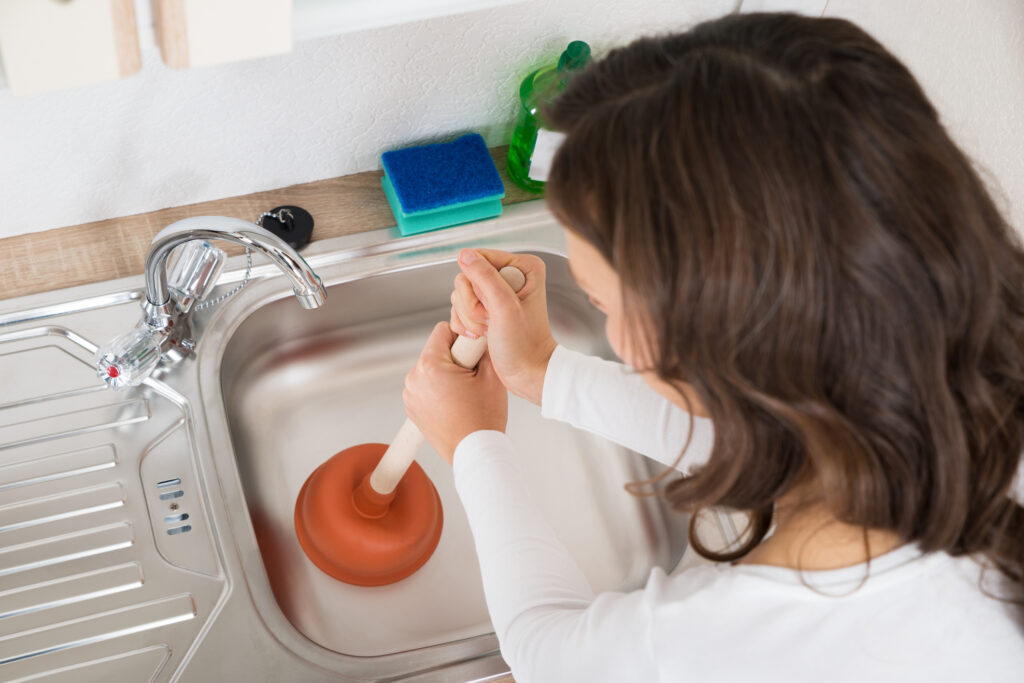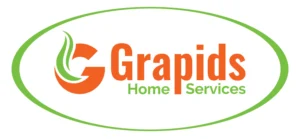
Dealing with a drain clog in your home can be annoying, inconvenient, and even nauseating. While reaching for chemical drain cleaners as a quick fix may be tempting, they can often do more harm than good.
The keys to a quick resolution with minimal stress are accurately identifying signs of drain clogs, knowing the common causes of clogs, using safe DIY drain cleaning methods, and knowing when to leave drain cleaning to a licensed plumber.
What Are the Signs of Drain Clogs?
Slow Drainage
Your sinks, tubs, and showers should drain as quickly as the water comes from the faucet.
If you notice water taking longer to drain, you have a partial clog or blockage impeding normal drainage flow.
Foul Odors
Unpleasant odors emanating from your drains can indicate a clog in your drain or sewer pipe.
Foul smells are often caused by food waste, grease, or organic matter trapped in the pipes.
Gurgling Sounds
If you hear gurgling sounds coming from your drains when using nearby fixtures or appliances, it may indicate a blockage in the plumbing system.
The gurgling noise occurs as air tries to escape through the clogged pipe.
Water Backup or Overflow
Standing water makes it difficult to shower and use kitchen and bathroom sinks.
You can feel like you’re racing against the clock as the water level gets higher and higher, but continually using the fixture isn’t a sustainable solution.
Clogged Plumbing Fixtures
Frequent toilet clogs could suggest a deeper clog in the sewer line or a clog that is difficult to reach.
This recurring problem may require professional attention to resolve effectively.
What Are the Common Causes of Drain Clogs?
Some causes of drain clogs can be prevented with intentional action from homeowners, while others can be inevitable, depending on the conditions of your property.
The most common causes include:
- Hair and soap scum: Wet hair clumps together and sticks to other objects, like soap scum and residue, which can cause an even bigger drain clog to grow.
- Food particles and grease: Even if you have a garbage disposal, it’s best to play it safe and avoid sending bones, fruit pits, rice, pasta, and other food particles that can compound into a clog.
- Tree roots intrusion: Roots seek moisture to supply to the tree, and drain and sewer lines offer plenty of it. They’ll create small holes in the pipes and grow into them, causing a major blockage.
- Mineral deposits: Hard water is caused by excess minerals that can leave your clean clothes feeling dingy, your dishes with white spots, and your drains and faucets clogged.
Can You Unclog Drains Yourself?
Yes, minor drain clogs can be cleared by homeowners, though more stubborn or recurring clogs may require professional assistance.
If you have a clogged drain, try these safe and effective DIY drain cleaning methods:
Baking Soda & Vinegar Solution
This DIY solution can help break down mild clogs and remove residue in your pipes:
- Pour a pot of boiling water down the affected drain.
- Pour a cup of baking soda and a cup of vinegar down the drain.
- Cover the drain and let it sit for about five to 10 minutes.
- Flush the drain with hot water again.
It works because the chemical reaction between the baking soda and vinegar helps loosen the clog so the boiling water can flush it out.
Plunger
Plungers aren’t just for toilet clogs. It can also provide a quick and effective solution for sink and shower clogs.
Ensure a tight seal around the drain and use vigorous up-and-down motions to dislodge the clog.
Drain Snake
A drain snake is used to latch onto the clog and pull it out instead of flushing it through:
- Insert the snake into the drain with a firm grip on the handle
- Feed or rotate the tool until you feel resistance from the clog
- Pull out the tool and clean any debris off, disposing of it in the trash
- Repeat as needed until all debris is removed
When To Call in the Pros for Stubborn Clogs
It’s best to rely on professional drain cleaning to clear the blockage if:
- You don’t want to deal with the hassle of DIY methods.
- You’ve tried the DIY solutions, and the clog is still there.
- You have frequent drain clogs.
Your plumber can conduct a video camera pipe inspection to locate and identify the cause of the blockage so they can more easily clear it.
They also have advanced tools like drain augers to clear even the most stubborn blockages quickly.
How To Prevent Drain Clogs in the Future
Drain pipes are only designed to clear water, waste, and toilet paper. Any other substance risks causing a blockage.
The best way to prevent drain clogs is to avoid sending other substances down your drains.
However, clogs are bound to happen eventually, even if you’re vigilant, so we recommend scheduling preventative drain cleaning every one to two years.
Take action before signs of clogged drains appear, and you’ll be sure to reap the benefits.
Call Grapids for Drain Cleaning in Grand Rapids
Addressing drain clogs promptly is essential to prevent further plumbing issues and restore proper drainage in your home.
Grapids Home Services offers professional drain cleaning to clear even the toughest clogs and extend the life of your drain and sewer lines.
Don’t let drain clogs disrupt your routines. Contact us online or call [site_info_phone_number] to request drain cleaning services in Grand Rapids and throughout West Michigan.

